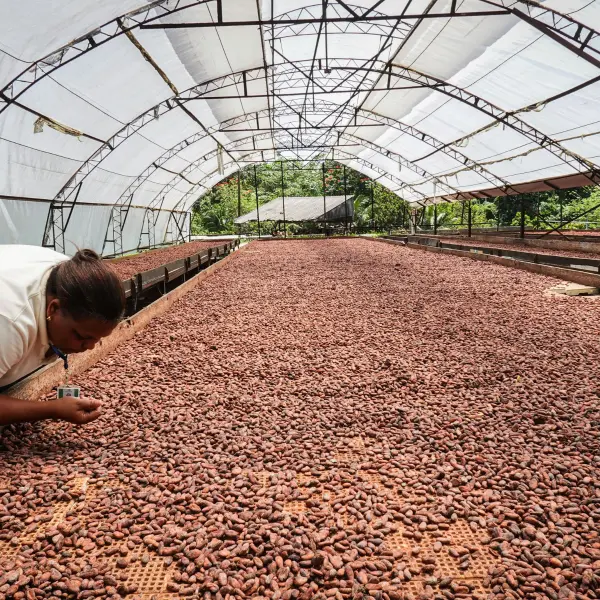Coffee is Uganda’s second-largest foreign exchange earner, contributing between 13–15% of total export revenues and supporting the livelihoods of over 12 million people according to recent data. Yet, the industry faces persistent challenges, from climate change and poor coffee bean quality to price volatility and limited access to appropriate technologies for farming, harvesting, drying, and storage. To ensure the continued growth and resilience of Uganda’s coffee sector, continuous innovation and cross-sector collaboration are essential.
To contribute to this, indEx facilitated a collaboration between a group of 30 engineering students at Chalmers University of Technology in Sweden and a coffee processing company in Uganda to develop innovative solutions to improve coffee drying technologies, and finding sustainable use for waste coffee husks.

Through indEx, students were tasked with rethinking sustainability and efficiency in coffee processing—focusing on process improvements and waste-to-value innovations. The outcome? A set of creative, design-driven solutions that left a mark on both the industry partner and the academic team.
“The partnership with Chalmers University and indEx offered a priceless forum for innovation and information sharing,” shared Thembo Boaz, the industry lead on the project. “We were able to explore sustainable alternatives in coffee production, processing, and waste management.”
Boaz was especially intrigued by student ideas such as:
- Stacked drying beds to enhance drying consistency and reduce contamination.
- Pellets from coffee husks as a green fuel alternative, tackling waste and energy costs.
- Biofertilizers derived from coffee waste to improve soil health and cut chemical usage.
- Machine redesigns to boost uptime and mechanical efficiency.
While these ideas are yet to be implemented, Boaz is already championing the next steps by pushing for pilot projects and feasibility studies within his company.
“These concepts provide valuable insights that could shape future operational improvements,” he noted. “They align well with current industry developments and the company’s long-term vision for sustainability.”
Students present one of the proposed solutions during the mid-project presentations featuring industry
Adam Mallalieu, the course academic supervisor at Chalmers, reflected on the value of the challenge:
“Despite the usual challenges especially working across geographies, the collaboration was great. It’s more intriguing and enriching for students to work on design projects from other parts of the world rather than just Sweden.”
Adam also emphasized that tackling projects with limited access to data and unfamiliar contexts pushed students out of their comfort zones and deeper into creative problem-solving, something essential in real-world design.
“The project posed many new types of challenges, but that is also good for the students,” he said. “From a design perspective, this was a solid process improvement project.”
This kind of feedback reinforces what indEx stands for; connecting higher education students with industry problems that matter, no matter where they come from. It’s not just about a design project. It’s about co-creating solutions that make an impact, on learning, on communities, and on the planet.
Interested in Giving Your Students Real-World Experience?
Join the growing network of universities and industry mentors collaborating on African industry design projects via indEx. We help students gain critical professional skills, build powerful portfolios, and create solutions that matter to the African continent.